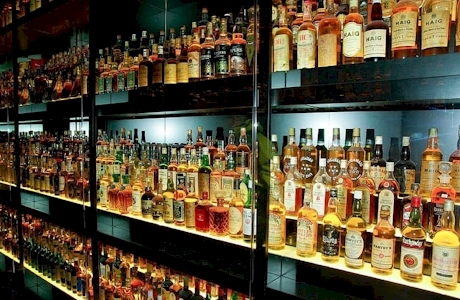SCOTCH CLASSIFICATION
Choosing your Scotch can be challenging due to the hundreds of varieties and brands, each with unique characteristics determined by the ingredients, geographic traditions, philosophy, skills, and desires of the distiller. To standardize classification, the industry created multiple classification systems based on type, region, casking, age, style, flavors, and aromas. The three most common include TYPE, REGION, and FLAVOR/AROMA CLUSTER.
(This page is an overview of Scotch classification systems. For more details, CLICK HERE).
CLASSIFICATION BY TYPE
There are five basic classes of Scotch: Single Malt, Blended Malt (a.k.a. Vatted or Pure Malt), Blended, Single Grain, and Blended Grain. Although grain Scotches are primarily produced for blending with malts, there are some quality Scotches in those categories. The most common types of Scotch and our primary focus are single malt, blended, and blended malt. Blended Scotch makes up over 90% of worldwide Scotch sales, while single malt Scotch is considered the pinnacle of quality and prestige.
CLASSIFICATION BY REGION
Classification by region is the traditional method of categorizing Scotch whisky. From the earliest days, distillers used local grains and water as the base for their brews, resulting in a thread of commonality between all whiskies made in the region. As distillers gained sophistication and skill, regional characteristics became increasingly desirable. People came from all over to buy Scotch with their identifiable flavors.
The traditionally recognized Scotch-making regions, Islay, the Highlands, Speyside, Campbeltown, The Islands (Skye, Jura, Mull, Orkney, and Arran), and the Lowlands, each possess unique characteristics based on local materials, methods, and customs. And, while many producers take great pride in producing whiskies that showcase these regional identifiers, modern Scotch-making techniques allow distillers to transcend the classical characteristics.
CLASSIFICATION BY FLAVOR/AROMA
Between the late 1980s and early 1990s, British journalist and reviewer Michael Jackson became the world’s leading authority on Scotch. His book, entitled “Michael Jackson’s Complete Guide to Single Malt Scotch,” was “the bible” of Scotch whisky, detailing and rating over one-thousand. His ratings, based on a quality scale of 0-100, was the standard for comparing Scotch, used for years to inform purchasing decisions. He maintained that any Scotch rated 75 or above is worthy of purchase, and for distillers, receiving a high rating in his book or one of his review articles all but guaranteed success.
Dismayed by the subjective nature of Scotch rating systems, British statistician and classification expert Dr. David Wishart began work a more objective method of selecting Scotch. While Mr. Jackson’s ratings weres based on his subjective comparisons, Dr. Wishart’s system created quantifiable attributes to accurately describe and group Scotch based on flavor and aroma clusters. In 2002, Dr. Wishart published “Whiskey Classified: Choosing Single Malts By Flavour.” He argued that while Jackson’s rating system gave Scotch enthusiasts a way to compare relative quality, it was just “one man’s opinion.” Dr. Wishart’s system allowed objective comparisons based on taste preferences. The two methods are still hotly debated, but I believe Dr. Wishart’s approach is more useful.

